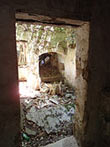 |
After
passing
a bridge over the stream in the gorge the first
mill houses emerge in the
area called Pano Myloi. |
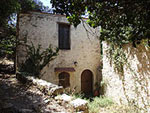
|
|
|
|
|
|
|
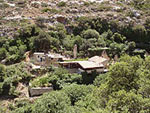 |
Shortly
afterwards there is a cafe.
|
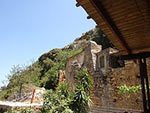
|
|
|
|
|
|
|
| In
this context it is also worth
noting the ingenious
aerial ropeway, which the
cafe owner has arranged
in order to bring goods to
the coffee shop from the other side of
the gorge. |
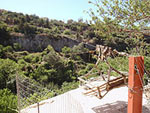
|
|
|
|
|
|
|
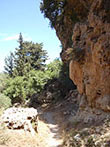 |
After
app. 200 metres you will meet a church of the Holy Five Virgins. Here
you will also find a spring with fresh drinking water. |
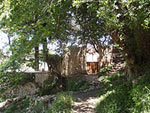
|
|
|
|
|
|
|
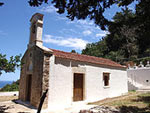 |
|
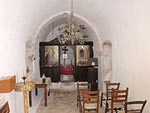 |
|
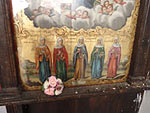
|
|
|
|
|
|
|
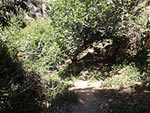 |
From
here
the path continues further
into the gorge through a
lush forest of trees
and creepers, without
ever becoming
difficult. |
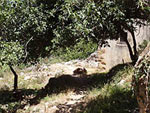
|
|
|
|
|
|
|
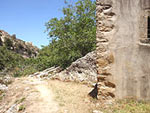 |
Mill
houses are placed along the path, and inside several
of them you can still see
remnants of millstones
and other equipment. |
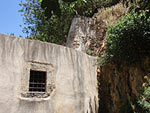
|
|
|
|
|
|
|
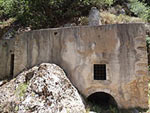 |
|
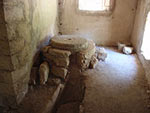 |
|

|
|
|
|
|
|
|
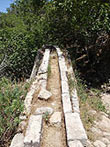 |
You
should
also note the open drains
that diverted the water
on to the next house. |
|
|
|
|
|
|
The
drains end in a funnel, where the water used to cascade down to the next
mill house. |
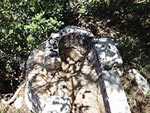
|
|
|
|
|
|
|
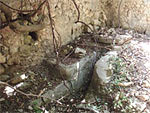 |
It
is also
interesting to see the drains
inside the houses and
the openings where the water left
the houses. |

|
|
|
|
|
|
|
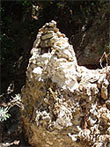 |
Before
you have to cross the river,
somebody has built a small
cairn, which also serves as a
church. |
|
|
|
|
|
|
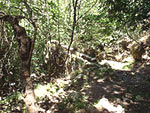 |
|
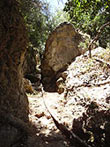 |
|
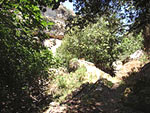
|
|
|
|
|
|
|
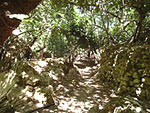 |
|
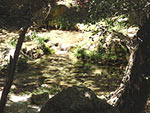 |
|
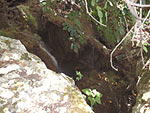
|
|
|
|
|
|
|
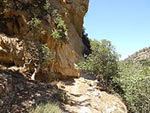 |
On
the other side
of the stream you meet a
steep cliff side, which in
addition to limestone and sandstone also
consists of a thick layer of
gravel. |
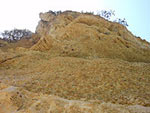
|
|
|
|
|
|
|
 |
Further
on you have to pass an aqueduct.
|
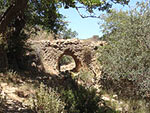
|
|
|
|
|
|
|
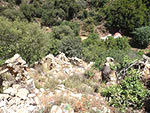 |
After
this you have to turn to the right and walk through Kato Myloi and pass
under another aqueduct, before reaching the stream once more. |
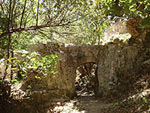
|
|
|
|
|
|
|
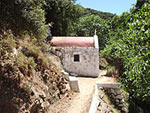 |
In
order to
get to the church of
Agia Paraskevi on the
other side of the stream, you must pass it jumping on slippery
stepping stones. |
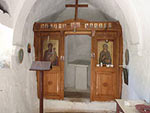
|
|
|
|
|
|
|
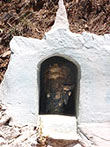 |
In
combination with the church somebody has
built a small chapel with
a colorful angel inside. |
|
|
|
|
|
|
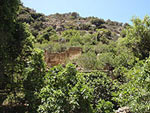 |
From
here
I decided to go back and
explore the cafe and
the gorge's history: |
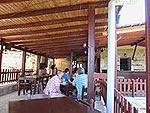
|
|
|
|
|
|
|
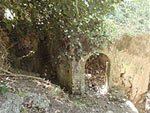 |
The
two
settlements Kato and
Pano Myloi were
finally abandoned in
1972 after the Ministry
of Social Affairs in 1963 had
expropriated the area Frachto,
where the new village of
Myloi
is located. |
|
|
|
|
|
|
| At
that time,
the mills already had
a long history, as there exists a
notary from May
31, 1643 about the lease of one
of the mills. In fact,
they were already built in
Venetian time to
provide sufficient grain for
both internal use and
export to Venice. At that time
the gorge was called Valle Cammilari. |
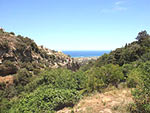
|
|
|
|
|
|
|
 |
In
the Turkish period the area was inhabited by turks, who called it
Deimenlu or Deimenlik (the area with the mills). |
|
|
|
|
|
|
| During
the German occupation
the mills worked with
particular intensity as there was a
shortage of fuel for the
diesel-powered mills in
the cities. |
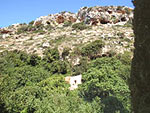
|
|
|
|
|
|
|
|
|
|
|
|
|
|
|
|